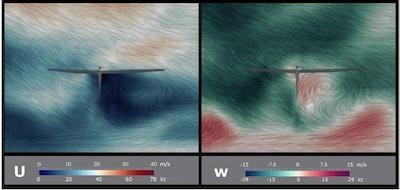Flight Crew’s Actions Praised
An MD-83 airplane ran off the end of the runway during a rejected takeoff March 8, 2017, because of an undetected mechanical malfunction, according to a recently-released report from the NTSB.

Seconds after reaching the takeoff decision airspeed of 158 mph at about 5,000 feet down a 7,500-foot runway in Ypsilanti, Michigan, the captain’s attempt to raise the nose and get the plane airborne was unsuccessful and he called “abort.” The airplane decelerated following the rejected takeoff but was traveling too fast to be stopped on the remaining runway. It departed the end of the runway at about 115 mph, traveled 950 feet across a runway safety area, struck an airport fence and came to a rest after crossing a paved road.
Investigators determined that a component of the elevator flight control system had jammed in the days before the accident flight while the aircraft was parked at Ypsilanti Airport during a wind storm with recorded gusts in excess of 60 mph. Although the flight control system was designed and certified to withstand such horizontal gusts, computer simulation of the wind flow showed that a nearby hangar generated localized turbulence with a vertical component that could move the elevator rapidly up and down, ultimately causing it to jam.
The flight crew completed all preflight checks, including a test of the flight controls, and found no anomalies before initiating the takeoff roll on the accident flight. The NTSB said that there was no way that the pilots could have detected the flight control jam until it was too late.
“This is the kind of extreme scenario that most pilots never encounter – discovering that their plane won’t fly only after they know they won’t be able to stop it on the available runway,” said NTSB Chairman Robert L. Sumwalt. “These two pilots did everything right after things started to go very wrong.”
Investigators said that the captain’s quick decision to abort the takeoff and the other crewmember’s coordinated efforts to assist him had likely contributed to the survivability of an accident in which there were no serious injuries among the 110 passengers and six crewmembers. The Ameristar Charters Boeing MD-83, which was transporting the University of Michigan basketball team to Washington, D.C., was substantially damaged.
The NTSB also noted that the 1,000-foot runway safety area – added to Ypsilanti airport during upgrades between 2006 and 2009 – likely contributed to the lack of serious injuries. In 1999, in response to an NTSB recommendation, the Federal Aviation Administration began a national program to add runway safety areas to many commercial airports.
“The addition of runway safety areas at many airports are a real success story in commercial aviation, as demonstrated in Ypsilanti” said Sumwalt. “RSAs across the nation have mitigated accidents, prevented injuries and saved lives.”
(Image provided with NTSB news release. This figure is a vertical cross-section visualization of wind simulation results showing flow pattern and horizontal “U” and vertical “W” wind magnitudes near the accident airplane’s elevators)
 ANN's Daily Aero-Term (04.25.24): Airport Rotating Beacon
ANN's Daily Aero-Term (04.25.24): Airport Rotating Beacon ANN's Daily Aero-Linx (04.25.24)
ANN's Daily Aero-Linx (04.25.24) Klyde Morris (04.22.24)
Klyde Morris (04.22.24) Airborne 04.24.24: INTEGRAL E, Elixir USA, M700 RVSM
Airborne 04.24.24: INTEGRAL E, Elixir USA, M700 RVSM Airborne 04.22.24: Rotor X Worsens, Airport Fees 4 FNB?, USMC Drone Pilot
Airborne 04.22.24: Rotor X Worsens, Airport Fees 4 FNB?, USMC Drone Pilot



